A World(view) Transformed by War
Introduction
A comparison of two maps within the MacLean Collection help illustrate some of the resulting cartographic revisions implemented. Both maps have been discussed in an earlier MacLean Collection Map Chat. This Map Chat examines other considerations between these two maps in particular — including each mapmaker’s geopolitical vision. It is important to note that both maps were produced in and for the imperial court and thus represented an official and public perspective.
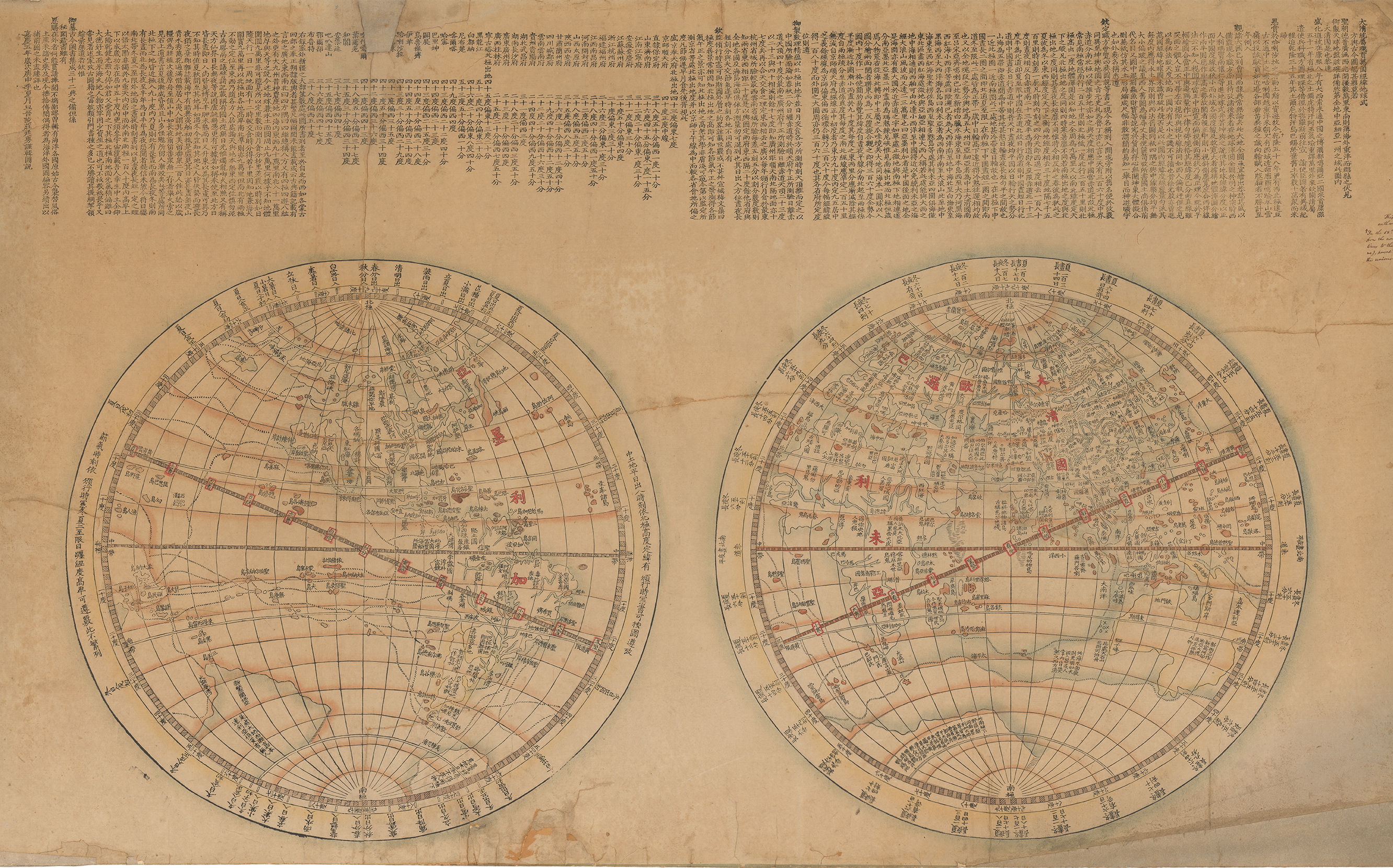
Map A
Daqing tongshu zhigong wanguo jingwei diqiu shi fangyu gujin tu 大清統屬職貢萬國經緯地球式方輿古今圖 (1800) by Zhuang Tingfu 莊廷尃.
Scholar mapmaker Zhuang Tingfu’s 1800 map was produced at the end of the height of Qing power. After a long string of successful military conquests under the reign of the Qianlong Emperor (r. 1735-1796), the greater Qing empire had expanded to an unprecedented size.
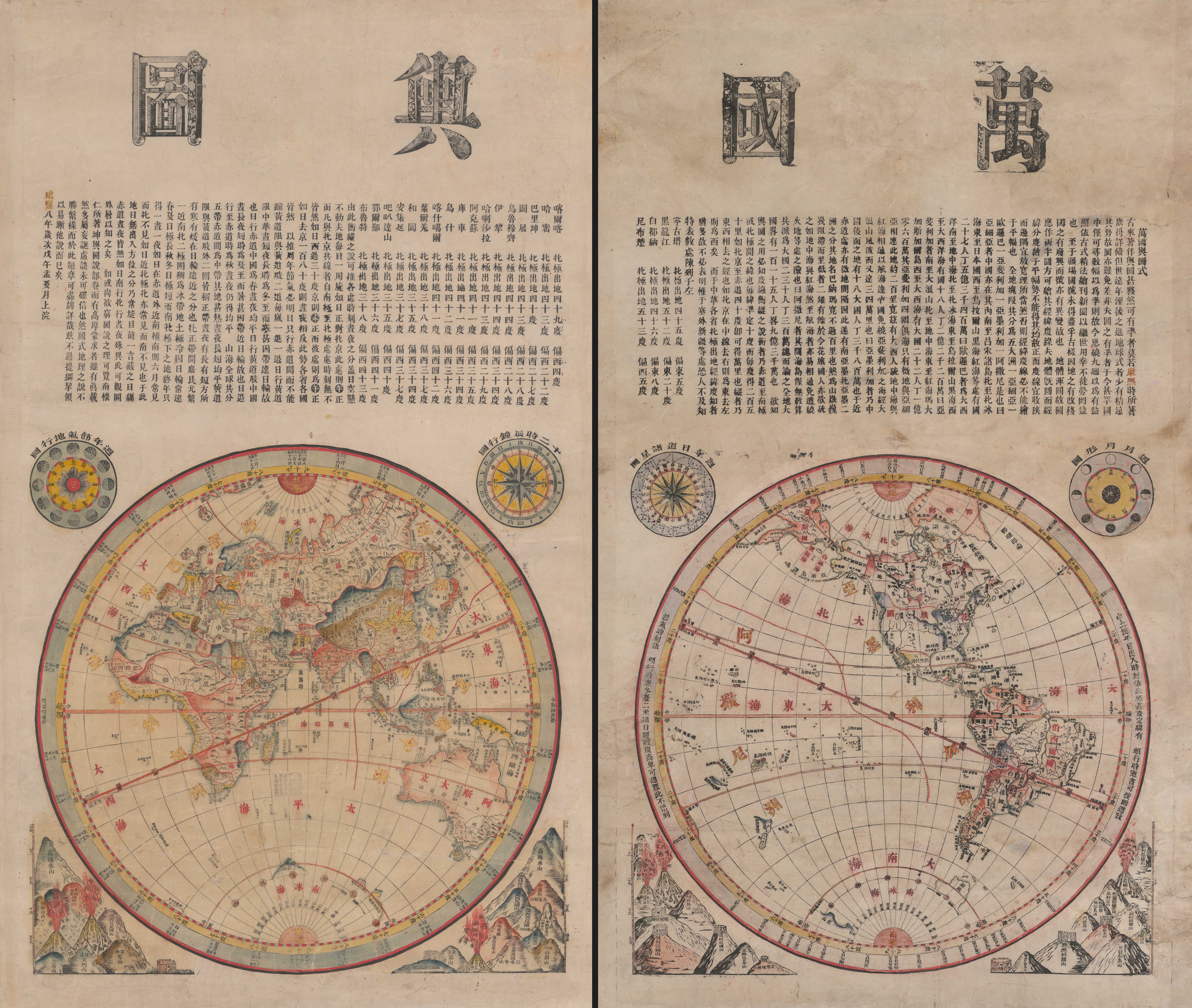
Map B
Wanguo yutu 萬國輿圖 (1858) by an unknown maker.
The 1858 Wanguo yutu was produced anonymously during the Second Opium War (1856-60). It was based on Zhuang’s earlier 1800 map, visually and textually reproducing many elements like much of the lengthy inscription and generally the double hemisphere projection of the world.
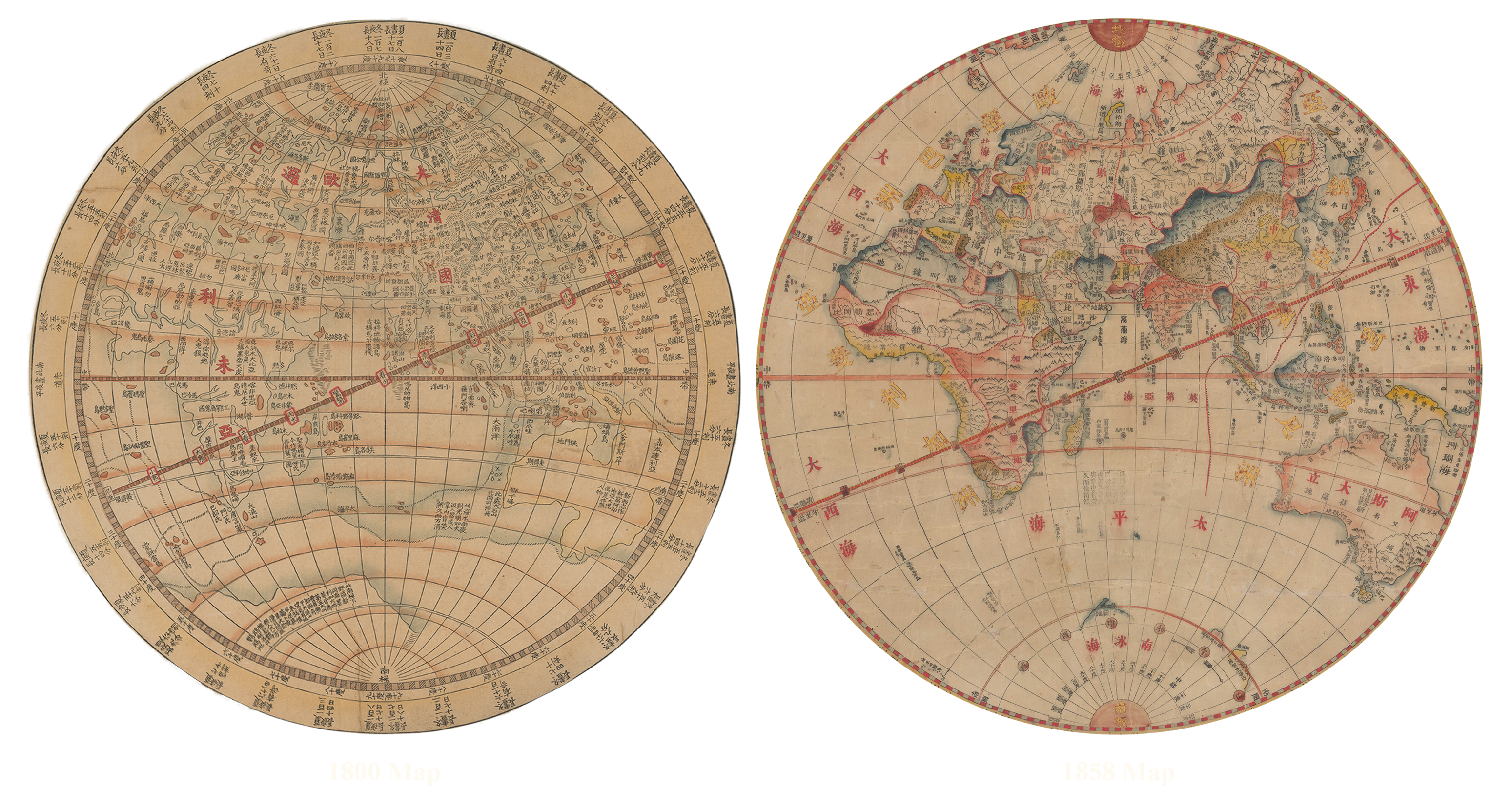
Comparisons
In Zhuang Tingfu’s map, only the coordinates of major cities within the greater Qing empire were listed in the preface and named within the map (Fig. 1).
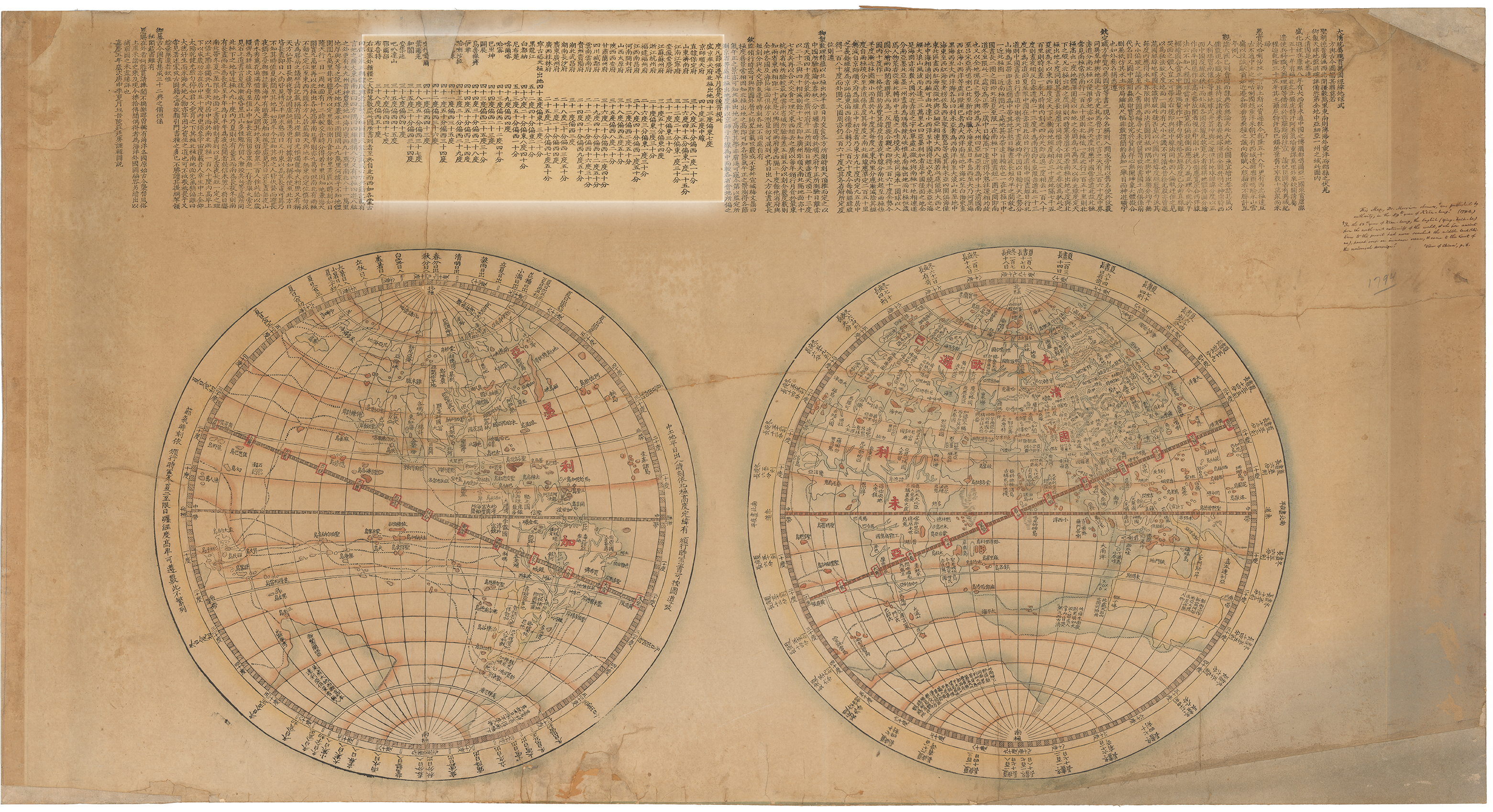
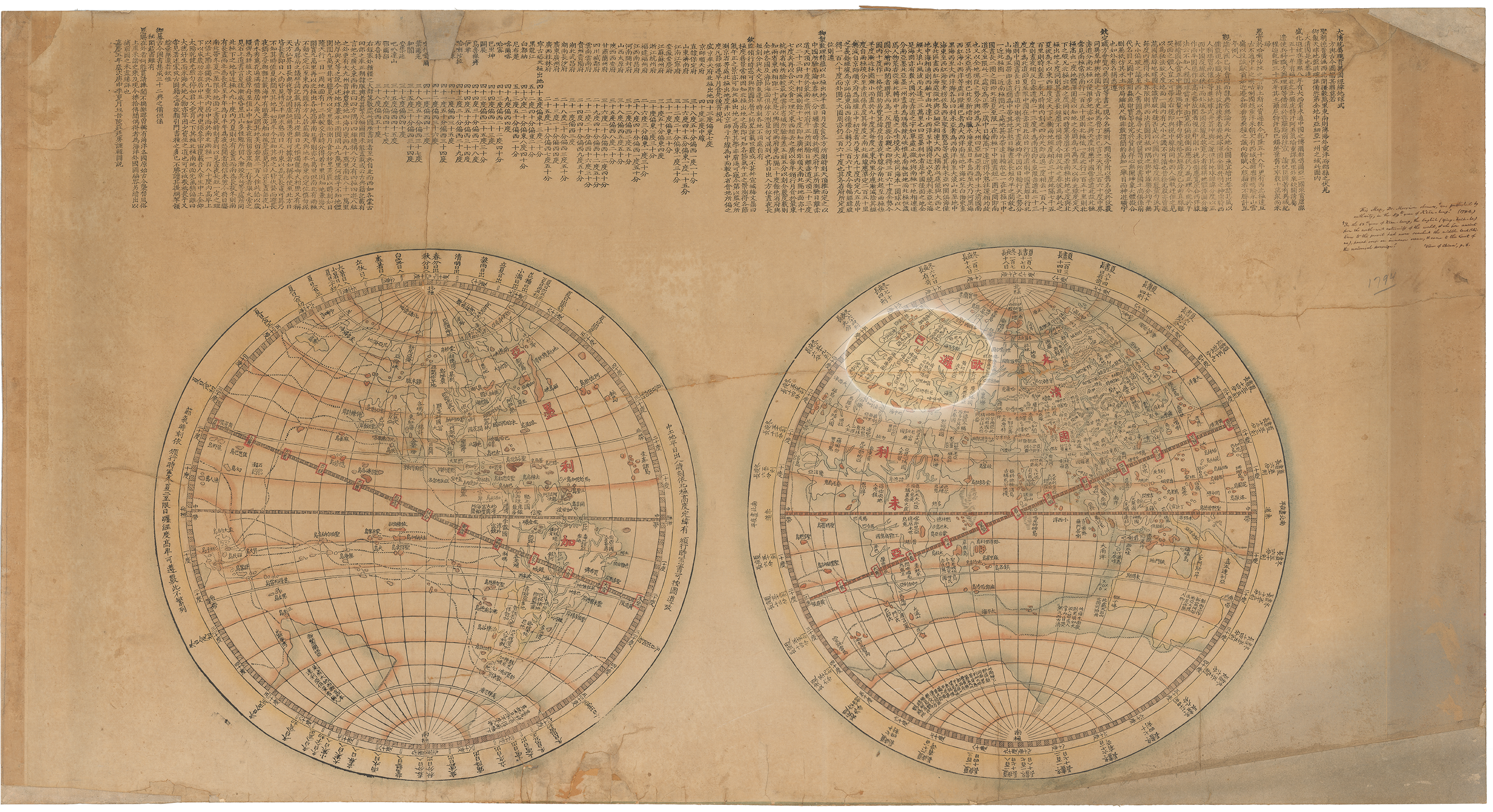
Conversely, the anonymous court mapmaker of the 1858 map indicated greater interest in the larger world, that beyond Qing China. Within the preface, only the coordinates of major cities in Saiwai 塞外 (beyond the Great Wall) and Xinjiang 新疆 (the “New Territories”) were listed, omitting all the Qing capital and provincial capital coordinates. Major cities and geographical landmarks around the world were named and marked. Political boundaries between nation-states and continents were drawn using dotted black lines and highlighted in red (Fig. 3).
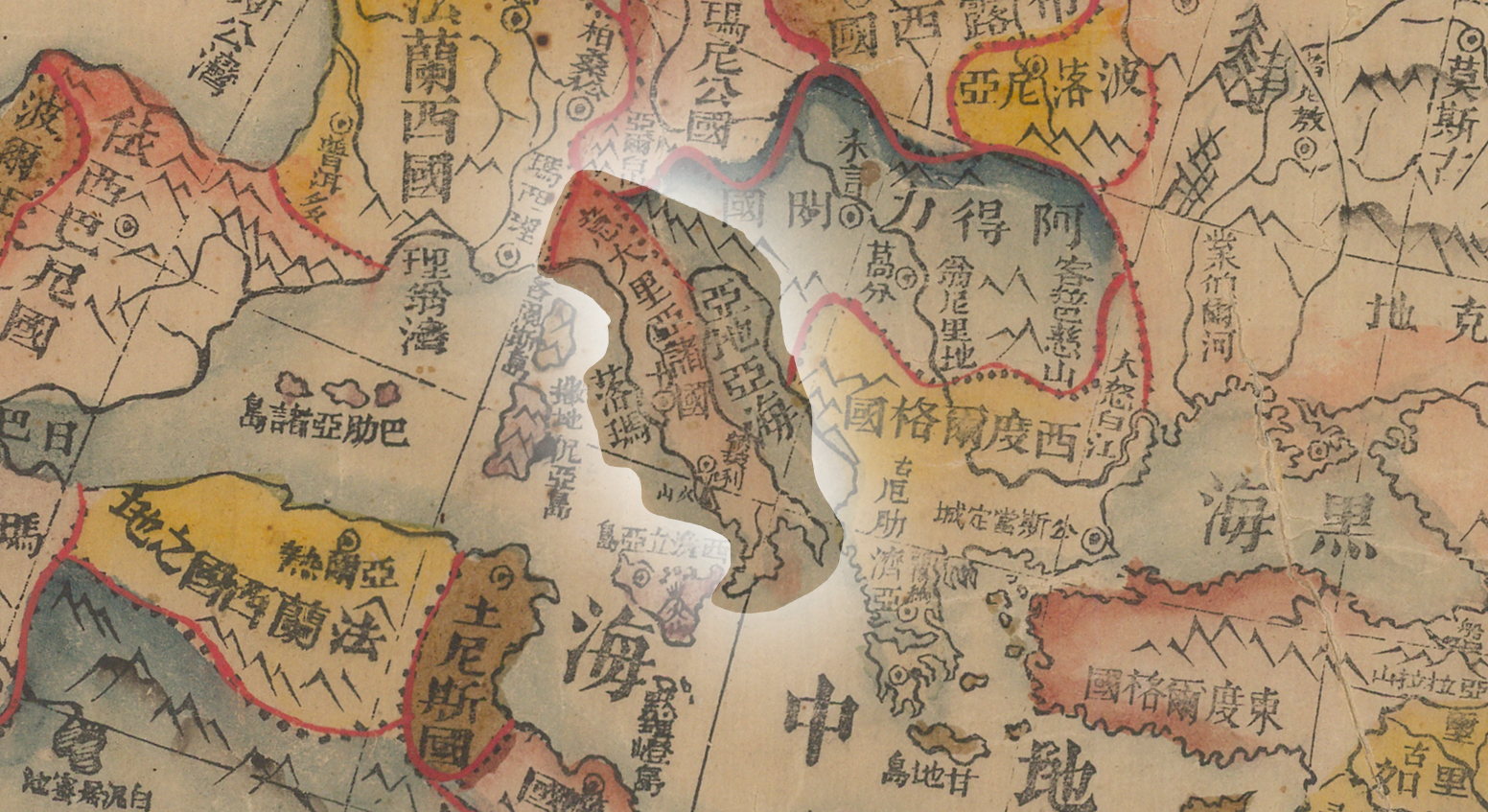
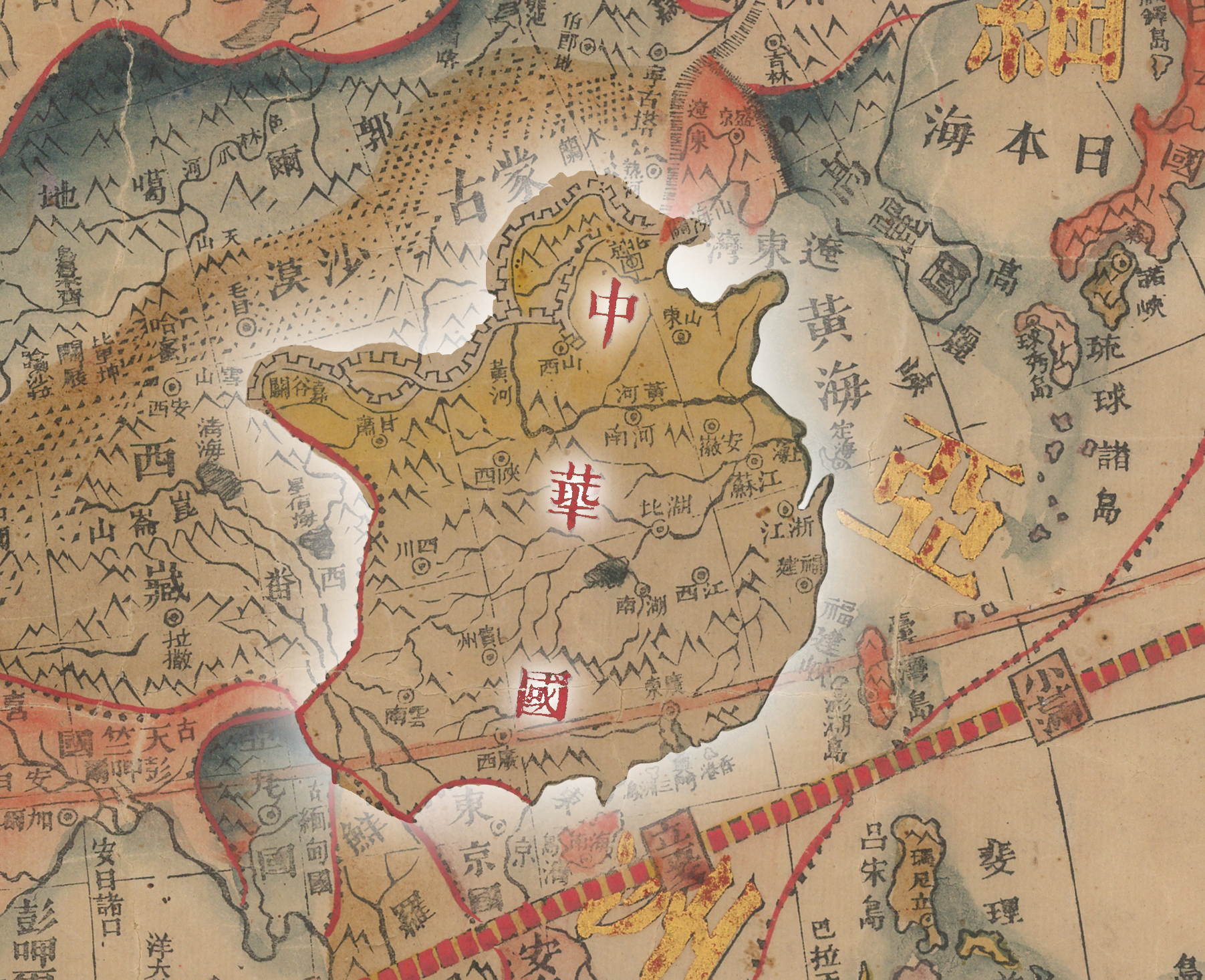

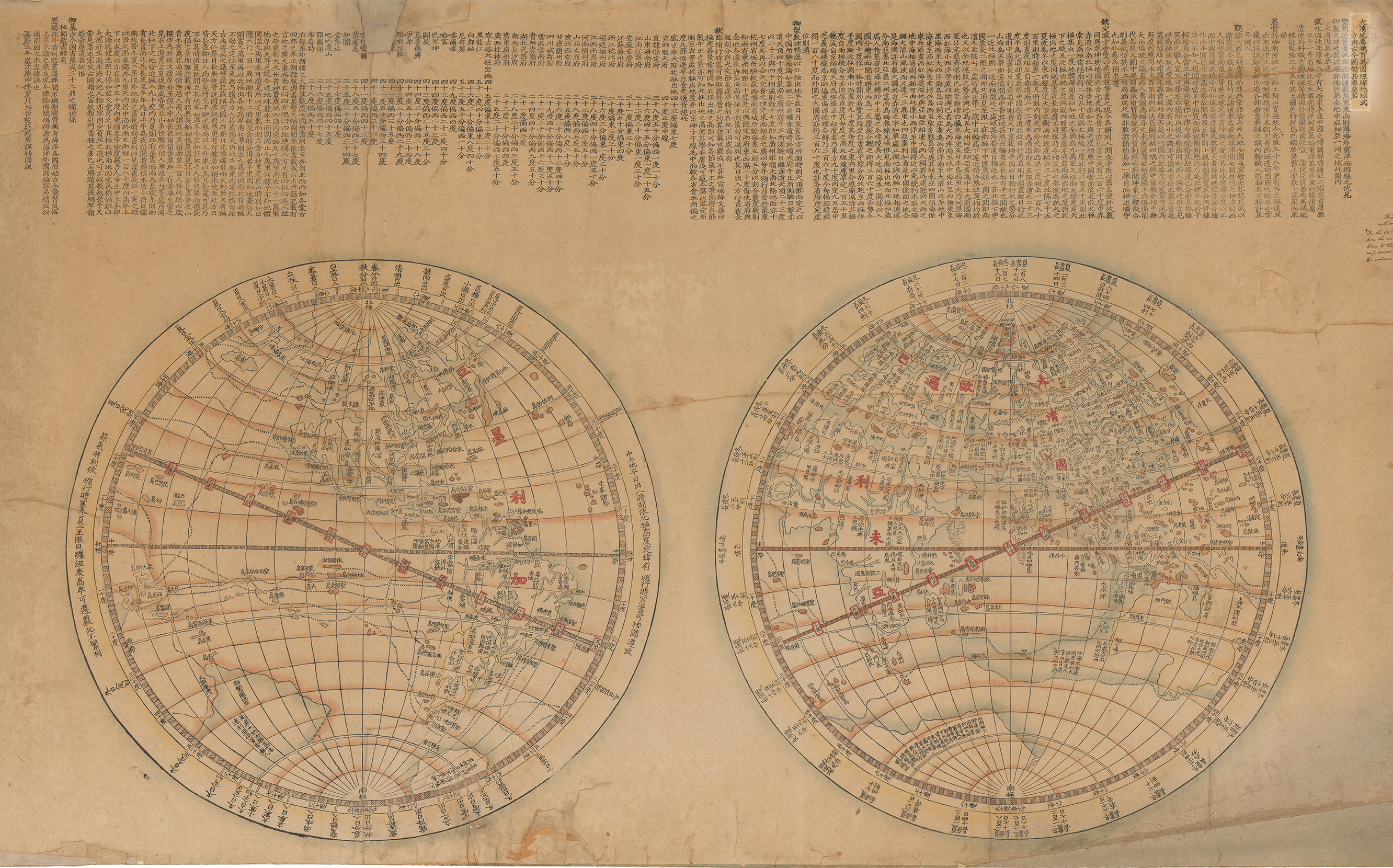
It’s a New World
The worldview presented through the 1858 map brought its mapmaker into alignment with early Qing reformers like the scholar-official Wei Yuan 魏源 (1794-1857), who soon after the first opium war published his famed geographical atlas, the Haiguo tuzhi 海國圖志, in three editions between 1844-52. Published for widespread distribution, this book popularized the image of a world of distinct competing nations, with China being one of many. It was to be understood that each nation state had a unique evolution in its habits, societies, and technologies. Within such a world, nation states were expected to uphold the principle of Westphalian or national sovereignty, whereby each state holds exclusive sovereignty over its territory. The Haiguo tuzhi was the first indigenous Chinese work to assert that China had to participate in such a system.
This new worldview meant a conceptual shift away from the Sino-centric tribute system which had framed Ming and Qing China’s foreign relations. The so-called tribute system defined the official relations and affiliations between the Ming/Qing empire and non-Ming/Qing regions. The 1800 map uses the term “tribute bearing” in the title with examples provided in the first paragraph of the preface. (Fig. 5)
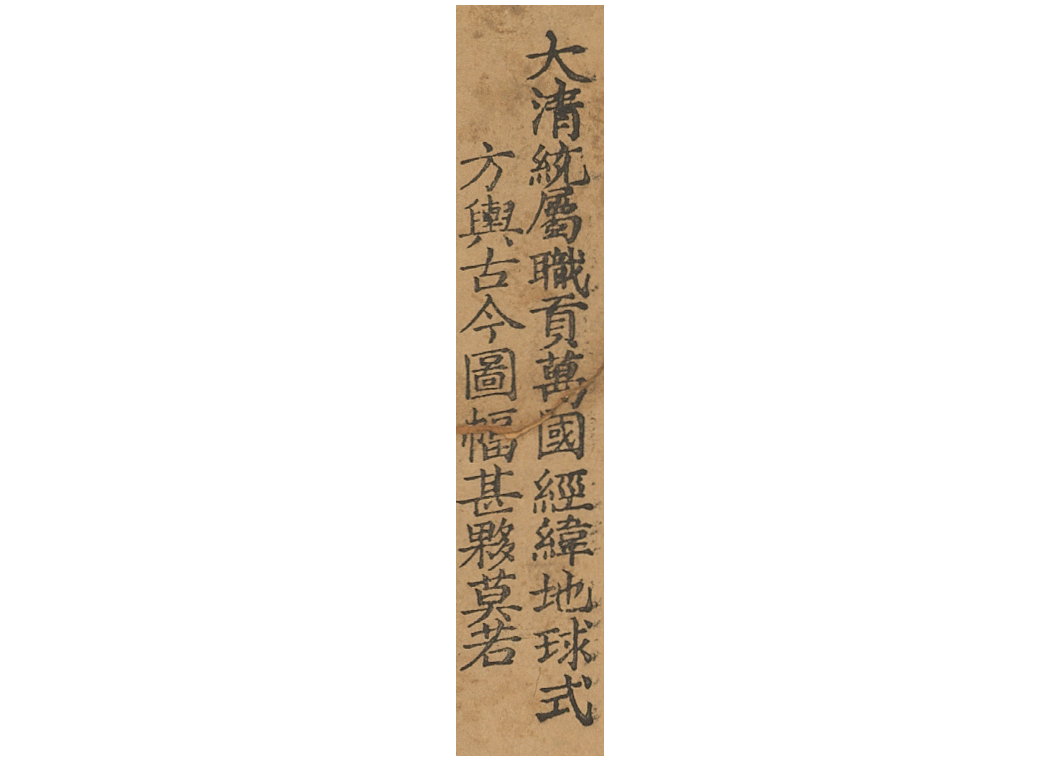
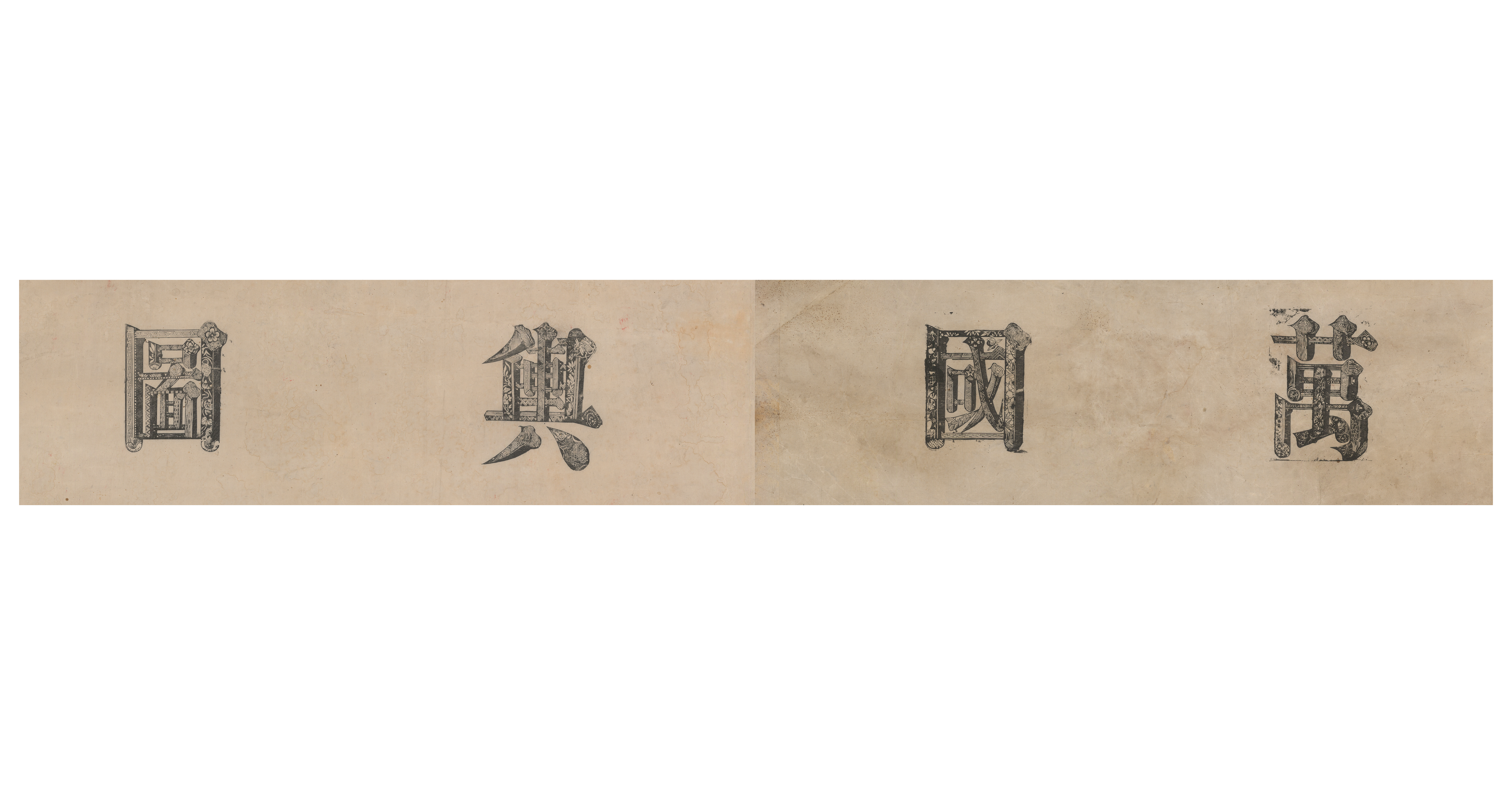
A World(view) Transformed by War
Conclusion
Amberly Yeo | Author
Dr. Richard A. Pegg | Editor & Project Manager
Katie E. Osborne | Development & Design
Further Reading
Cao, Wanru et al., eds. An Atlas of Ancient Maps in China: The Qing Dynasty (1644-1911) (Beijing: Cultural Relics Publishing House, 1997).
